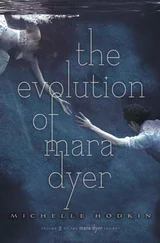“These are dreadlocks,” she said. Dread and lock being two of the unfriendliest words in the English language, I wondered why on earth anyone would choose to affectionately apply them to a style of hair.
Oh, and the way she walked in those dirty bare feet of hers. That was impressive. Tal didn’t walk like an ordinary human. For a long time I had associated human walking with the persistent rhythmic squeaking and squawking of sneakers on the hard tile floor of the lab. (Except for Haywood, the garrulous musicality of whose walk we have previously discussed.) And then there were the students at the university, with whom I honestly had only limited contact during my time at the lab — a great diversity of footwear abounded on the bottoms of their legs. I came to love the sound, for instance, of high-heeled shoes. They make that scrap-clock, scrap-clock noise to which my mind to this very day immediately attaches erotic associations. Flip-flops also make interesting sounds, that repeated squishing and slapping they make against the heel, and sometimes a little bubble of air gets trapped between the bottom of the foot and the moist surface of the flip-flop, which when pushed out from beneath the flat of the foot by the pressure of gravity may result in a very rare, and very faint — but always uproariously funny — fart noise. Tal, though, generally eschewed shoes of any sort, preferring always to go barefoot, but rather than eliminating any sound that might emanate from her feet, her walk in fact seemed even louder than a normally shod person’s. She walked always with directness and even a sense of aggression, planting one foot directly in front of the other, describing perfectly straight lines wherever she went. Her long, thick, and frighteningly strong legs connected with surfaces beneath her body in loud, meaty stomps. When she walked across a room I could feel the vibrations she made, with each new step for a brief moment her body became rooted to the earth as solidly as a tree. This only happened when she was barefoot, though; it wasn’t quite the same effect when she had her sandals on. Tal was as comfortable as any human I’ve met with her own bipedal existence. Most humans are still a little awkward on two legs, despite years of evolution. Indeed, upright walking may have been useful for traversing the plains of prehistoric Africa, but ultimately, considering how people of a certain age are wont to gripe and caterwaul about their legs and feet and hips and knees and backs giving out on them, I wonder if it wouldn’t be a bad idea to go back to all fours.
It was difficult to gauge the nature of Tal’s relationship with the rest of the scientists at the lab. I don’t think they quite knew what to make of her. It’s possible that they found her presence as weird and unruly as I did. Whenever she said anything, the other scientists seemed to trust her words a little less, as if they needed additional rechecking and verification. They were all a little colder with her than they were with each other. I am always keenly conscious of the dynamics of social dominance hierarchies. In the primal society of the lab, Norm was the alpha male. Prasad was the beta male. The other men were graduate students, and they ranked below Lydia, who was the highest-ranking female. The female graduate students ranked below the male graduate students, and Tal was definitely the omega of the omegas — and everyone in the lab treated her accordingly. Even the other low-ranking females would put her in her place with very subtle dominance displays. Except for Lydia. Lydia took a shine to her, and this was what socially protected Tal from the rest of the group. The approval of the lab’s highest-ranking female was enough to keep Tal on board, but not enough to raise her status above omega.
At some point during the first few weeks I started seeing Tal in the lab, Lydia began to speak of her surprisingly often. As soon as it was time to go home, all thoughts having anything to do with the lab — including the lab personnel — were banished at once from my mind, and I directed my attentions toward what the remaining part of the day had in store for me: what foods I would eat, what cartoons I would watch. But now with increasingly frequency Lydia would talk about Tal on the drive home, or over dinner. I was frankly a little put off by how many times Lydia would mention her in conversation. See, in addition to all her aforementioned weirdnesses, Tal was apparently a woman of very particular and passionate hobbies. She was a dancer, and a maker of puppets. I really had no idea yet what “dancing” and “puppets” were. Come to think of it, I now think that it must have been Tal’s training in modern dance that gave her that aggressive, stomping barefooted gait. But as for the puppets…
I remember when Tal — at, I suppose, Lydia’s behest — brought one of her puppets to the lab. It was probably the most terrifying and hideous thing I had ever seen. I was fascinated by human beings’ representations of themselves — like the mannequins in the department store. But this thing was the human form not abstracted (like the mannequins) but deliberately exaggerated, tortured and perverted, its every aspect and feature twisted into the grotesque. Violent spots of red enflamed its long, beaky nose and its lacquered wooden dimples that were pushed outward by a leerily grinning crescent mouth, and it had huge blue marble eyes with inwardly bent brows. The overall expression implied the face of someone about to do something meaningless and cruel. He wore a pointy red hat and a little gold-trimmed red suit. The point of the hat drooped over his head such that his profile had three ugly hooks protruding from it: the hat and his nose pointing sharply down and his chin pointing sharply up. Tiny pink-painted stationary wooden hands poked out of the empty cloth bags of his sleeves. On the bottoms of his floppy cloth legs he wore pointy green shoes with jingle-bells sewn onto the tops of them. The creature looked like some sort of demonic elf. He was horrifying — and I hadn’t even seen him in motion yet.
“Bruno,” said Tal. “Meet Mr. Punch.”
Tal slipped her arm into the vacant bag of the creature’s body, and suddenly it (one) was fucking alive , and (two) had attached itself to her arm .
Without my noticing, Tal had also somehow turned her voice into a distorted, barely articulate, high-pitched, metallic quacking noise. And yet, because my attention was diverted to the monstrosity on the end of her right arm, even though I perfectly well knew it was she who was speaking, the voice seemed to emanate from the head of the puppet — as if this tiny monster made of wood and fabric and marbles had been given not only an independent agency and autonomous locomotion, but a consciousness, a voice!
“That’s the way to do it!” declared the disgusting creature, and followed it with a mischievous cackle. “ That’s the way to do it! Ah -hahaha-ha!”
Why in the world was this being done to me? The other scientists crowded around us in skeptical distrust of this whole exercise. Lydia sat cross-legged on the squishy blue mat on the lab floor, and Tal sat crosslegged directly facing her. I sat in Lydia’s lap. As soon as the puppet began to move its horrible head and speak with its horrible quacking voice, I turned my head away from it, burrowing my face into Lydia’s body, where it was fragrant and safe and warm and I could be near her nourishment-symbolizing breasts. In retrospect, the puppet probably did not wave its arms or clap its hands or nod its head or speak in its quacking voice more than a total of ten or fifteen seconds before Lydia called a halt to the experiment. Lydia signaled Tal to stop what she was doing. She could see at once that whatever effect they had been hoping for with this experiment (amusement?) was not happening, but rather I was afraid. Tal reached into her mouth and removed some sort of spit-slimy piece of metal. Then she removed her arm from the body of the puppet, disemboweling him, rendering him a slack dead bag of fabric with hands and a head.
Читать дальше












